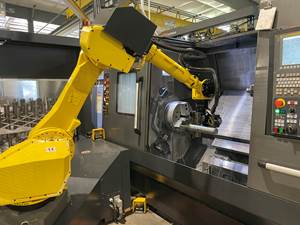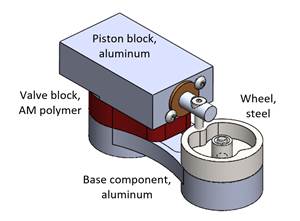Proving The CNC Job
I thought that program was proven! Many manufacturing people, especially upper management, feel that if a program has been verified and has been used to successfully complete one production run, there should be no problems when running the job in the future. In reality, any number of things could be different the next time a job is run.
Share






I thought that program was proven!
Many manufacturing people, especially upper management, feel that if a program has been verified and has been used to successfully complete one production run, there should be no problems when running the job in the future.
In reality, any number of things could be different the next time a job is run. At the very least, this leads to duplicated effort as the job is re-run. Worse, the setup person may have problems to overcome each time the job is run, leading to wasted time. This can be very frustrating. In many companies I’ve visited, CNC people feel like they are chasing their tails when re-running jobs.
Even coming up with a good definition of a proven job can be difficult. Is it a job that has been run once before? Is it a job that has been run successfully three times? Is it a job that all setup people and operators have had to run at least once?
The challenge is eliminating all of the potential differences from the first time a job is run to all future times the job is run. If nothing changes from one time to the next, the tasks related to setup and running production can be repeated. So, our definition is this: “A proven job is one that can be run repeatedly without modification to the program, setup or the way production is run.”
Until you eliminate all modifications from one time a job is run to the next, you can’t consider a job truly proven. And again, this usually involves a substantial effort—one that begins with the question, “What has changed from the last time we ran the job?”
Think about inconsistencies that cause problems as people struggle to repeat jobs. In many cases, these will be related to inadequate documentation, the skill of the people involved, and/or a lack of communication. What has changed is related to a misunderstanding among the people involved.
As an example, say the setup instructions for a given machining center are rather vague. Clamp positions are not specified. Doing his best, the setup person places a clamp in a location that will interfere with the tool motions of the program. At the very least, this will result in wasted time as the program or setup is changed. This inconsistency can be avoided with adequate documentation.
Other inconsistencies are unrelated to documentation and skill level of the people involved. If, for example, the location surfaces of a multi-workpiece fixture have worn over time, the setup person may have to alter the program every time the job is run. Like any perishable tool, fixtures must be replaced or serviced.
Some inconsistencies are even more severe. Say, for example, you find that the speeds and feeds for tools in a job must be changed every time the job is run, even though your cutting tools remain the same. In this case the hardness of the raw material is what’s changing. The long-term solution would be to place more emphasis on purchasing consistant material.
As CNC people, we can find ourselves with problems beyond our control. The company may be acquiring material from several suppliers, based on which one is offering the lowest price. Buyers must understand if inconsistencies in the workpiece material waste time and money when jobs are run, the company hasn’t really saved money by using the cheaper material. Given the high costs related to lost time, the company may lose money.
Related Content
Same Headcount, Double the Sales: Successful Job Shop Automation
Doubling sales requires more than just robots. Pro Products’ staff works in tandem with robots, performing inspection and other value-added activities.
Read MoreWorkholding Fixtures Save Over 4,500 Hours of Labor Annually
All World Machinery Supply designs each fixture to minimize the number of operations, resulting in reduced handling and idle spindle time.
Read MoreSolve Worker Shortages With ACE Workforce Development
The America’s Cutting Edge (ACE) program is addressing the current shortage in trained and available workers by offering no-cost online and in-person training opportunities in CNC machining and metrology.
Read MoreManufacturing Technology and Training in Europe
NTMA’s European Tech Tour exposed attendees to the latest technology and traditional training methods used by European manufacturers.
Read MoreRead Next
AMRs Are Moving Into Manufacturing: 4 Considerations for Implementation
AMRs can provide a flexible, easy-to-use automation platform so long as manufacturers choose a suitable task and prepare their facilities.
Read MoreMachine Shop MBA
Making Chips and 91ĘÓƵÍřŐľÎŰ are teaming up for a new podcast series called Machine Shop MBA—designed to help manufacturers measure their success against the industry’s best. Through the lens of the Top Shops benchmarking program, the series explores the KPIs that set high-performing shops apart, from machine utilization and first-pass yield to employee engagement and revenue per employee.
Read MoreLast Chance! 2025 Top Shops Benchmarking Survey Still Open Through April 30
Don’t miss out! 91ĘÓƵÍřŐľÎŰ's Top Shops Benchmarking Survey is still open — but not for long. This is your last chance to a receive free, customized benchmarking report that includes actionable feedback across several shopfloor and business metrics.
Read More.jpg;width=70;height=70;mode=crop)


















